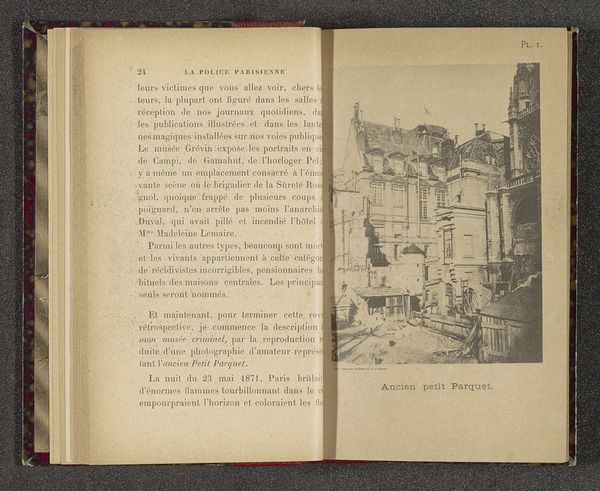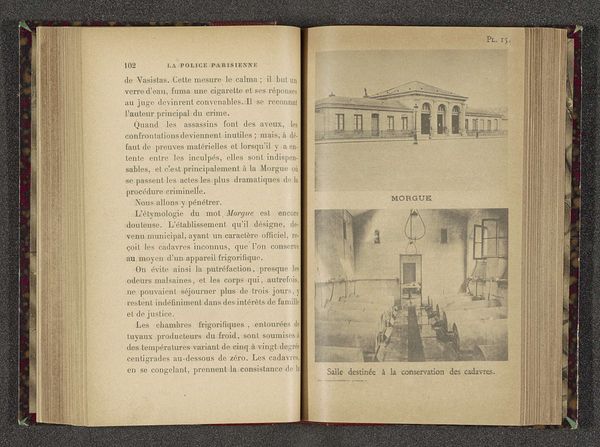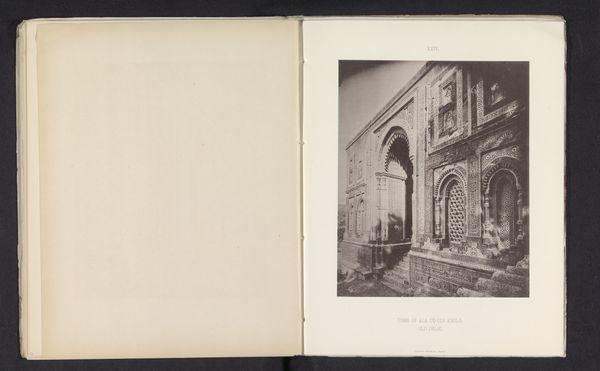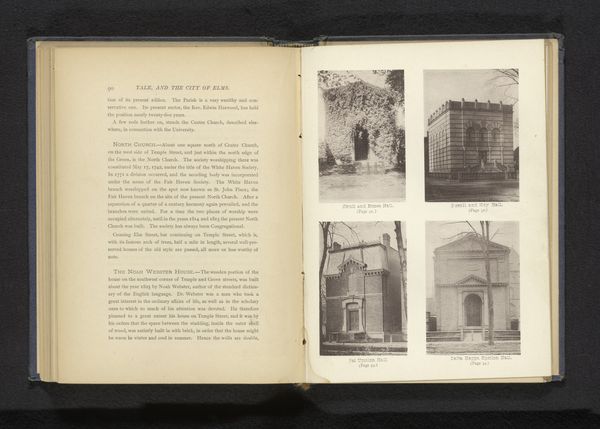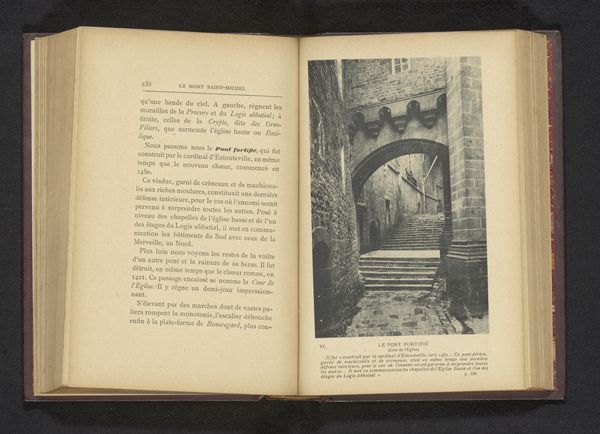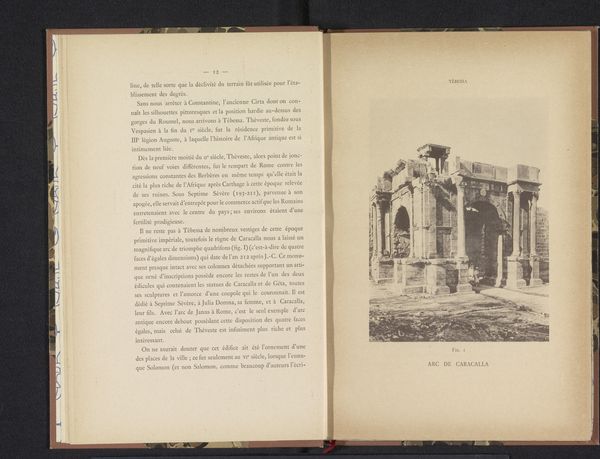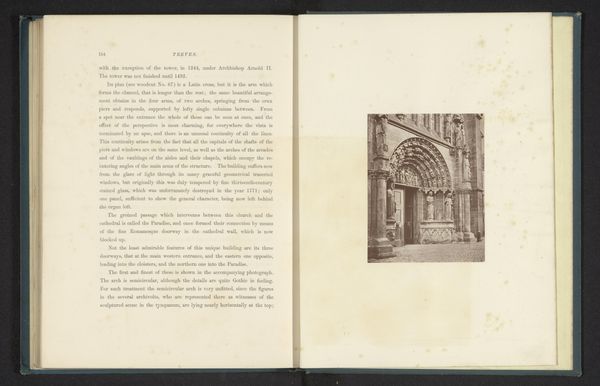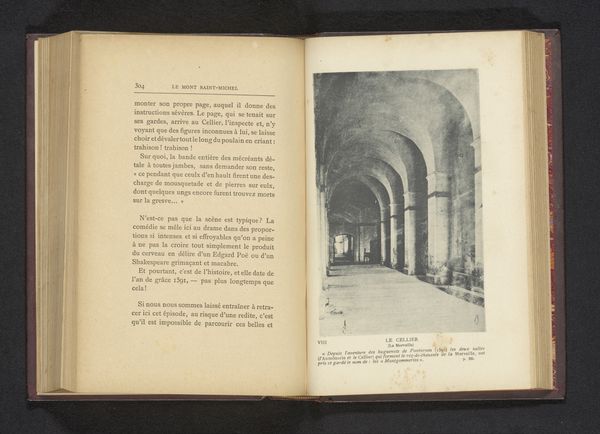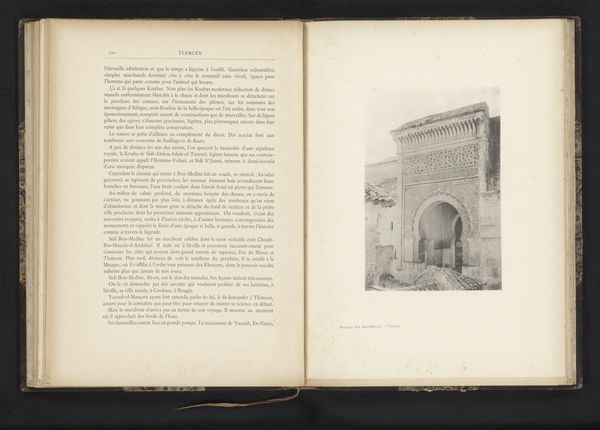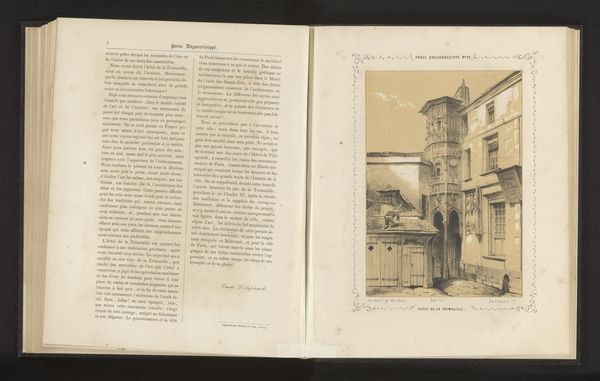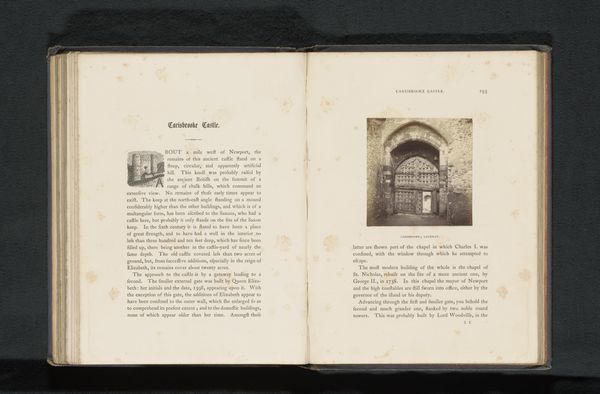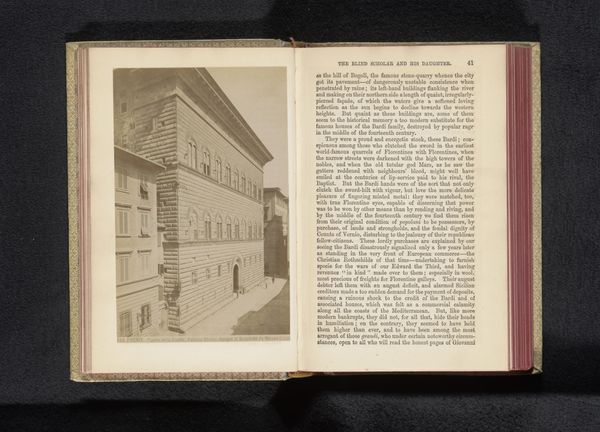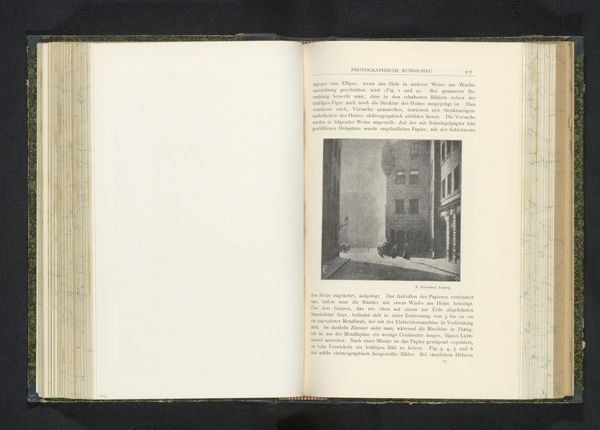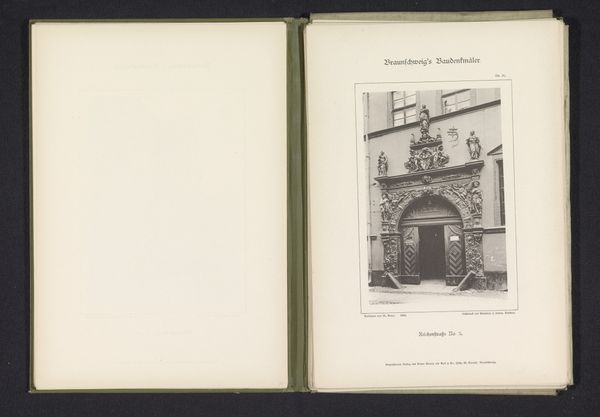
print, photography, architecture
# print
#
house
#
photography
#
cityscape
#
history-painting
#
architecture
Dimensions: height 174 mm, width 105 mm
Copyright: Rijks Museum: Open Domain
Curator: So, here we have a page from a book showcasing photographs, "Twee gebouwen in Parijs" which translates to "Two buildings in Paris" taken before 1890. It’s interesting to see Paris documented through this print medium, capturing cityscapes in this way. What's your initial impression? Editor: I'm struck by how raw the photographs feel, like a document of something crumbling, perhaps? I see text discussing "La Police Parisienne", which feels very connected to its moment in time. What stands out to you, especially considering the historical context? Curator: Considering that the work is within a publication covering Parisian Police, its main purpose lies in its evidentiary role as photographic documentation of locations within the city. This adds a new perspective to viewing it as the photographs now carry extra-artistic weight within the cultural milieu, not for aesthetics or expression, but for its public function. The inclusion of La Tourelle de la Reine Blanche also reminds the viewer of a very specific historic moment through photography’s potential for preservation. Why do you think the two buildings are juxtaposed in the frame, or do you feel the placement is arbitrary? Editor: That's fascinating! The pairing must be intentional, hinting at a narrative that connects law enforcement, Parisian landmarks, and perhaps even social control. It raises questions about whose Paris is being documented and for what purpose. Curator: Precisely! The arrangement serves the needs of the publication first, using the architectural landmarks as key locations, framing our understanding of Parisian society and law through the gaze of power. Understanding how photographic imagery has been used helps us discern why and for whom such images were created. Editor: So, this isn’t just about the buildings themselves; it’s about how these buildings function within the larger context of Parisian law, order, and public knowledge. Fascinating! I hadn't considered photography in that light before. Curator: Indeed. Context can often open the photograph and provide meaning when we have very little else to go on, especially when a picture surfaces into modern context from historical depths.
Comments
No comments
Be the first to comment and join the conversation on the ultimate creative platform.
